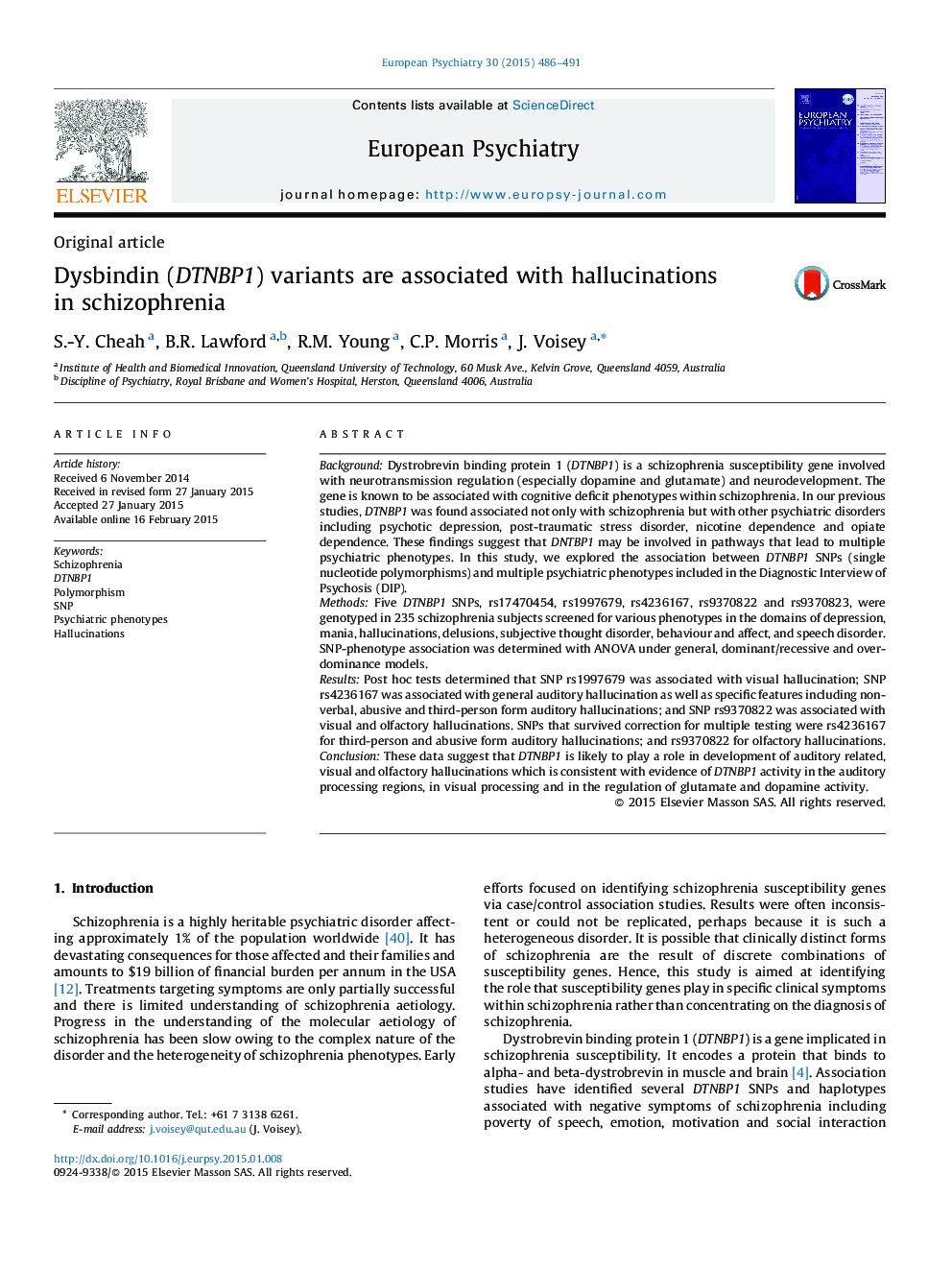| کد مقاله | کد نشریه | سال انتشار | مقاله انگلیسی | نسخه تمام متن |
|---|---|---|---|---|
| 4183727 | 1277285 | 2015 | 6 صفحه PDF | دانلود رایگان |

BackgroundDystrobrevin binding protein 1 (DTNBP1) is a schizophrenia susceptibility gene involved with neurotransmission regulation (especially dopamine and glutamate) and neurodevelopment. The gene is known to be associated with cognitive deficit phenotypes within schizophrenia. In our previous studies, DTNBP1 was found associated not only with schizophrenia but with other psychiatric disorders including psychotic depression, post-traumatic stress disorder, nicotine dependence and opiate dependence. These findings suggest that DNTBP1 may be involved in pathways that lead to multiple psychiatric phenotypes. In this study, we explored the association between DTNBP1 SNPs (single nucleotide polymorphisms) and multiple psychiatric phenotypes included in the Diagnostic Interview of Psychosis (DIP).MethodsFive DTNBP1 SNPs, rs17470454, rs1997679, rs4236167, rs9370822 and rs9370823, were genotyped in 235 schizophrenia subjects screened for various phenotypes in the domains of depression, mania, hallucinations, delusions, subjective thought disorder, behaviour and affect, and speech disorder. SNP-phenotype association was determined with ANOVA under general, dominant/recessive and over-dominance models.ResultsPost hoc tests determined that SNP rs1997679 was associated with visual hallucination; SNP rs4236167 was associated with general auditory hallucination as well as specific features including non-verbal, abusive and third-person form auditory hallucinations; and SNP rs9370822 was associated with visual and olfactory hallucinations. SNPs that survived correction for multiple testing were rs4236167 for third-person and abusive form auditory hallucinations; and rs9370822 for olfactory hallucinations.ConclusionThese data suggest that DTNBP1 is likely to play a role in development of auditory related, visual and olfactory hallucinations which is consistent with evidence of DTNBP1 activity in the auditory processing regions, in visual processing and in the regulation of glutamate and dopamine activity.
Journal: European Psychiatry - Volume 30, Issue 4, June 2015, Pages 486–491